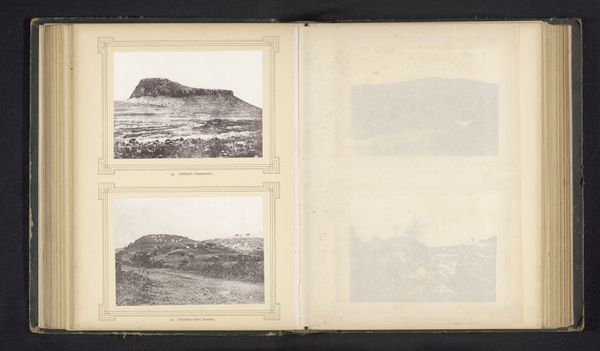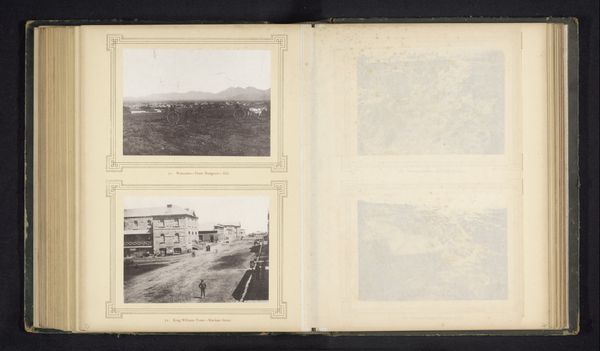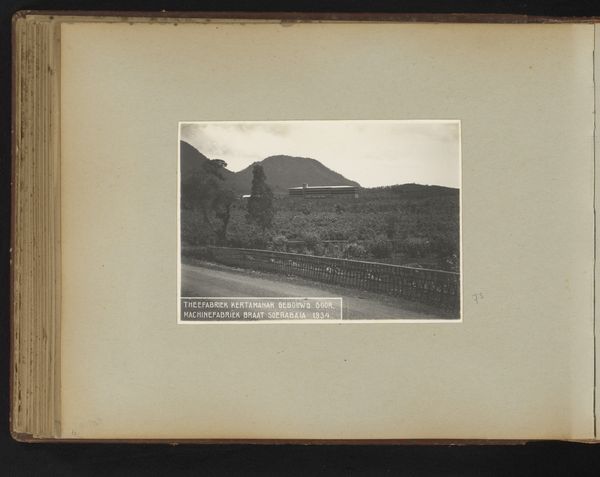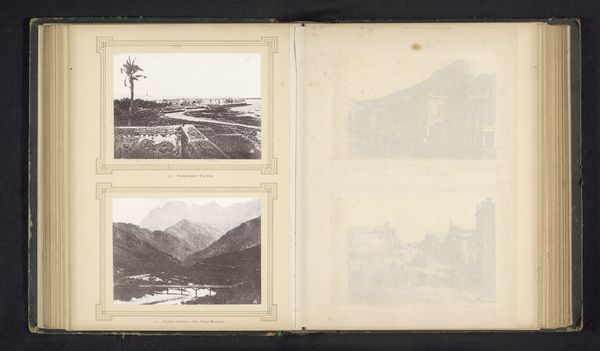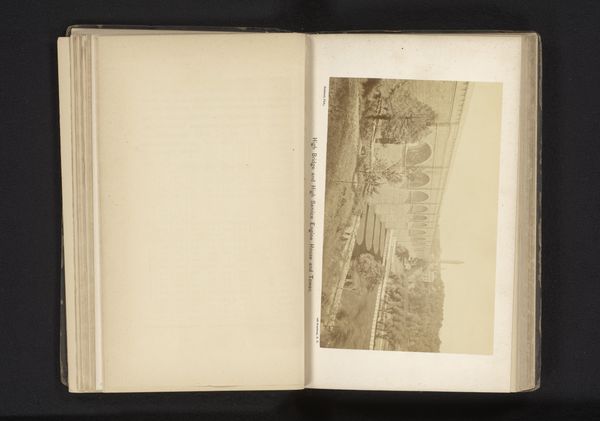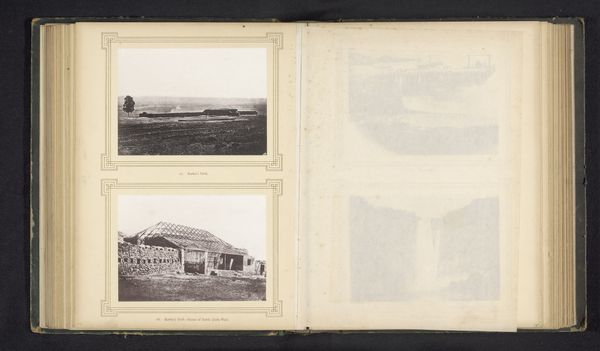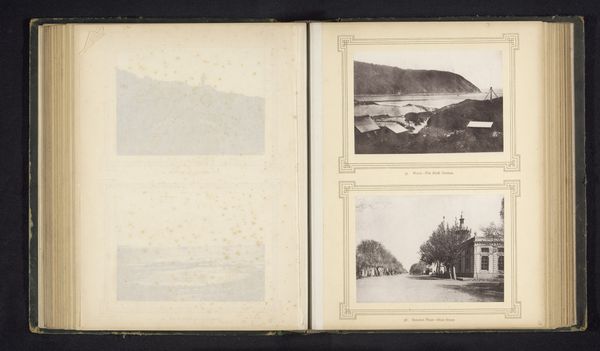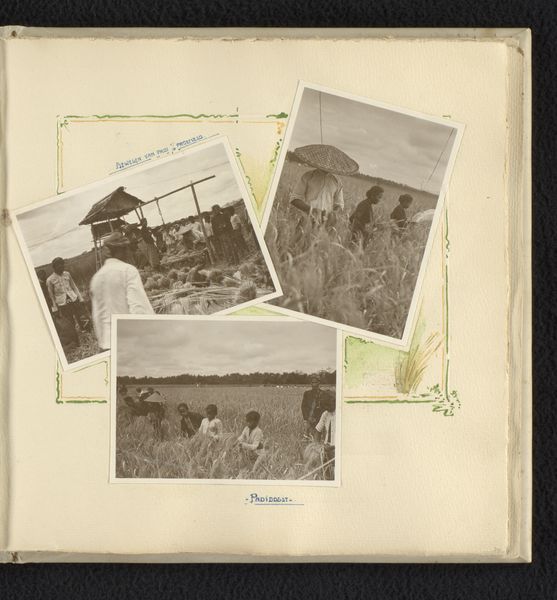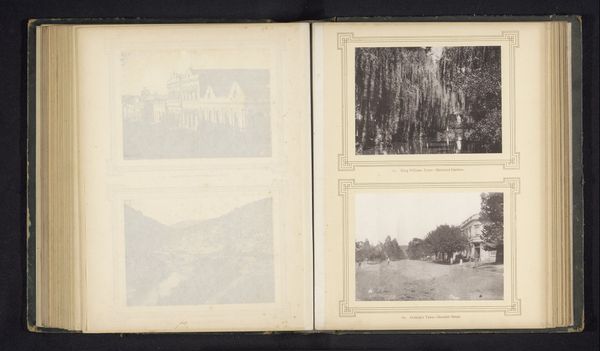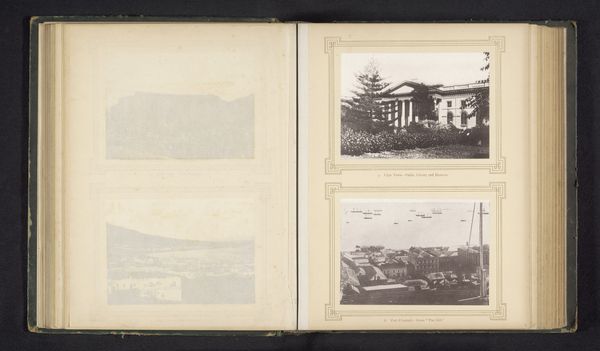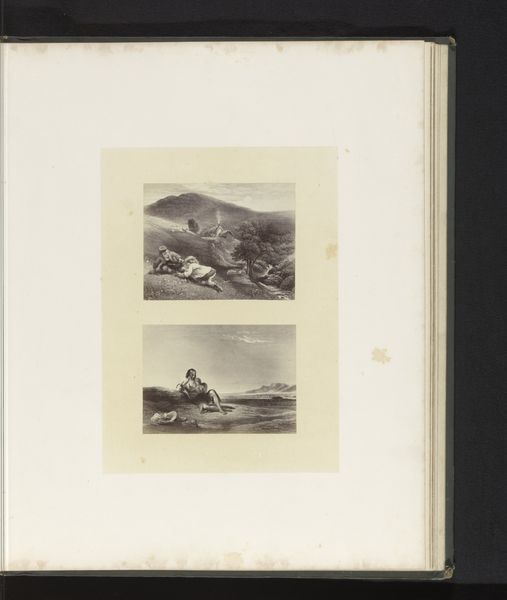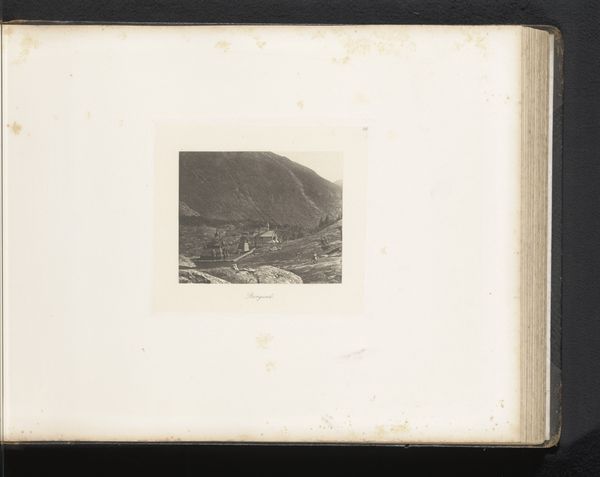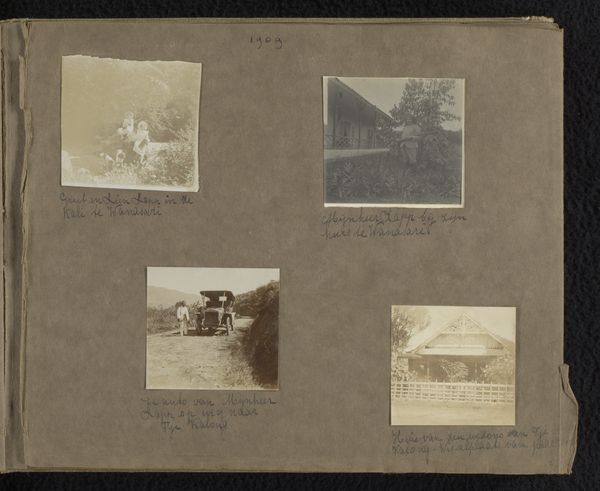
photography, gelatin-silver-print
#
landscape
#
photography
#
gelatin-silver-print
#
cityscape
#
mixed medium
#
mixed media
#
modernism
Dimensions: height 87 mm, width 116 mm, height 250 mm, width 320 mm
Copyright: Rijks Museum: Open Domain
Curator: Here we have an intriguing photographic triptych, "Theefabriek Kertamanah," or Kertamanah Tea Factory, created in 1934. The artist is unfortunately unknown. It’s a gelatin silver print housed within an album. Editor: Right away, there's this compelling mix of industry and nature, or maybe it is the clash of industry versus nature. The images seem both stark and serene. What I am most intrigued by is how this album displays several shots, all seemingly studies. It's a raw almost casual approach to showing it. I almost wish the photographs were more polished. It almost cheapens their impact. Curator: Interesting point about the casual approach. Consider that albums like this were often tools for colonial administrations documenting resource extraction. The repetitive compositions you note suggest a systematic surveying of the landscape and industrial developments in Java, Indonesia. It wasn't necessarily intended for public aesthetic appreciation. The scale feels almost like an engineer’s field notes. Editor: True, you can't separate these pieces from their historical setting. It is interesting looking through the perspective that the purpose might have been documentation instead of art. Now that you mention that, do you notice the difference of how people in these locations aren't shown? There's the architecture and landscapes, but never the lives, just objects. Almost ghostlike. That adds an unsettling undercurrent of human absence. The almost eerie way it's been kept, in album format also adds another layer to it's almost surreal composition. Curator: Exactly. The lack of human figures reflects a detached, objectifying gaze typical of colonial projects. It becomes a representation not of lived experience, but of resources, and capital and strategic assets. Editor: So it's less a picture of a tea factory, but a picture of colonial power dynamics being captured on film. This isn't about tea. Now the overcast sky in those landscape shots starts to feel less atmospheric, more ominous. It kind of is what it is really, that colonial cloud hanging heavy over everything. Curator: Precisely. Looking at it this way shows what was lost in translation to its true form. Hopefully we can help capture it here. Editor: Right, reclaiming stories, changing that single view on that landscape through thoughtful viewing, rather than purely extraction and industry is vital. That colonial gaze becomes, hopefully, a shared field of vision.
Comments
No comments
Be the first to comment and join the conversation on the ultimate creative platform.
